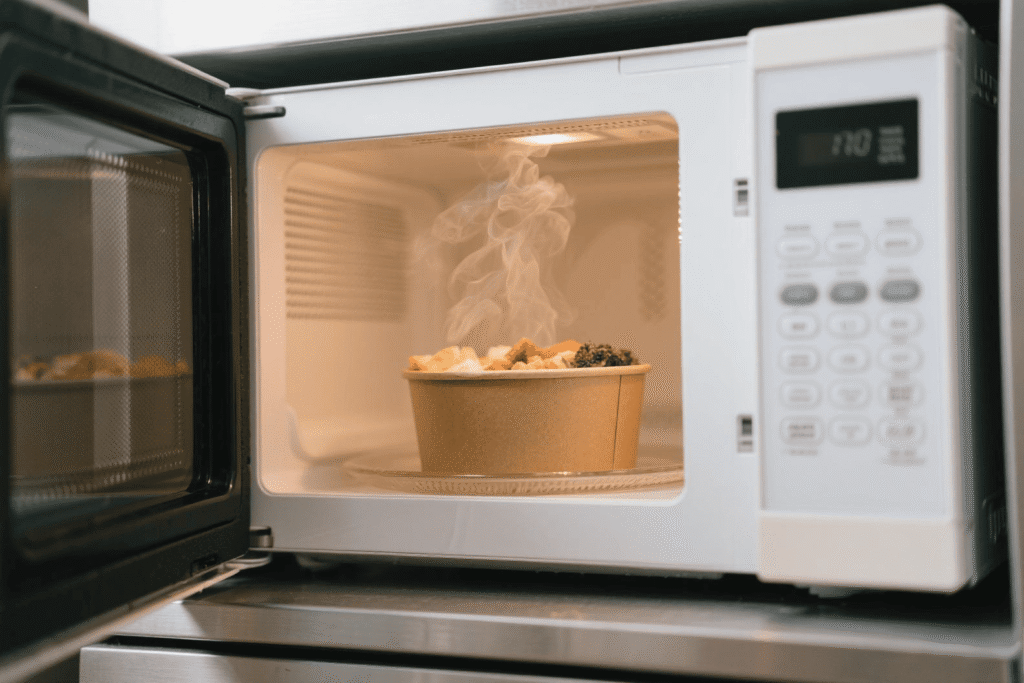Some people warn against putting paper cups in the microwave. Others say it’s fine. So which is true?
With proper design and food‑grade coatings1, certified paper cups are safe for short‑term microwave heating, as long as they contain liquid and are not overheated.
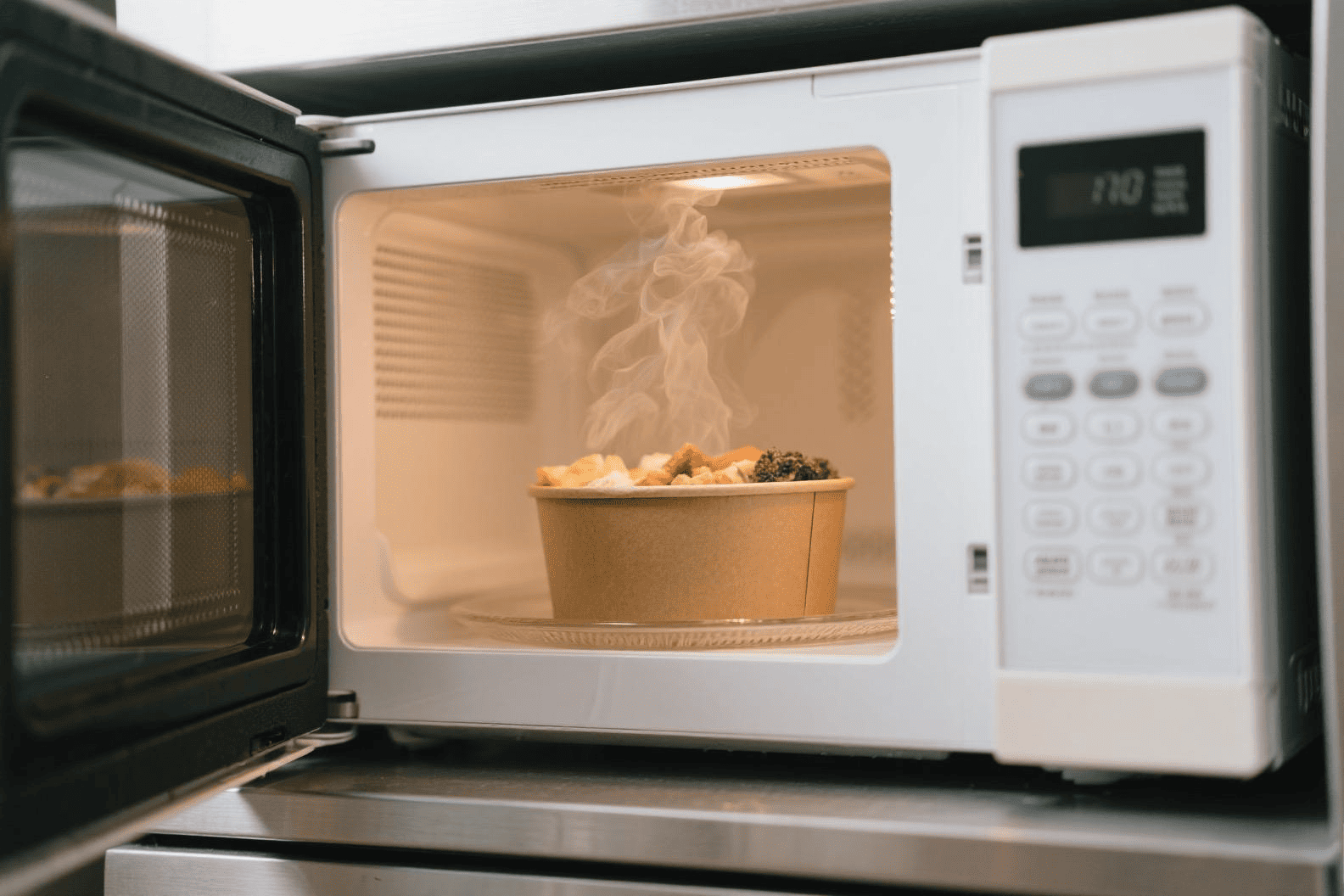
I have tested hundreds of cups for clients over the years. The safety depends on the coating type, certification, and heating time. Let’s break it down.
Is it safe to microwave a paper cup?
The microwave heats the liquid inside the cup, not the paper directly. If the coating can handle the heat and the cup meets safety standards, it’s safe.
Yes, paper cups with food‑grade PE, PLA, or water‑based coatings can be microwaved for 1–3 minutes when filled with liquid, without safety concerns.
![microwave safe paper cup]https://papercupshkl.com/wp-content/uploads/2025/08/图片6.png "microwave safe paper cup")
I once ran tests for a café chain that wanted to let customers reheat drinks in paper cups. We found that PE‑lined cups stayed intact with no residue or odor after 2 minutes at 800W. Customers appreciated both the safety guarantee and the absence of the “plastic taste” they got from microwaved plastic cups.
Microwave Safety Test Data
| Power × Time | Coating Type | Heat Resistance | Total Migration (mg/dm²) | Limit | Safe? |
|---|---|---|---|---|---|
| 800W × 2 min | PE | 120℃ | 1.2 | ≤10 | ✔ |
| 900W × 1.5min | Water-based | 125℃ | 2.0 | ≤10 | ✔ |
| 850W × 90 s | PLA | 80℃ | 1.8 | ≤10 | ✔ |
Is it safe to heat paper in the microwave?
Paper alone burns if it gets too hot, but with liquid inside the heating is controlled. The key is avoiding dry heating.
Yes, paper is safe in a microwave if it is in contact with liquid and does not exceed its heat tolerance. Dry heating can cause scorching or deformation.

When we tested uncoated kraft paper2 bowls empty, some warped slightly at the edges. But with food inside, the moisture kept the paper well below its burn point. The coating, not just the paper, determines overall safety.
Heating Safety Factors
- Coating heat resistance3
- Liquid content
- Heating time under 3 minutes
- Avoiding repeated overheating
What cups are microwave‑safe?
It’s not just paper cups—ceramic, glass, and some plastics also qualify as microwave‑safe if tested and labeled.
Microwave‑safe cups are those made from materials with high heat resistance3, tested for food safety migration limits4, and clearly labeled as safe.
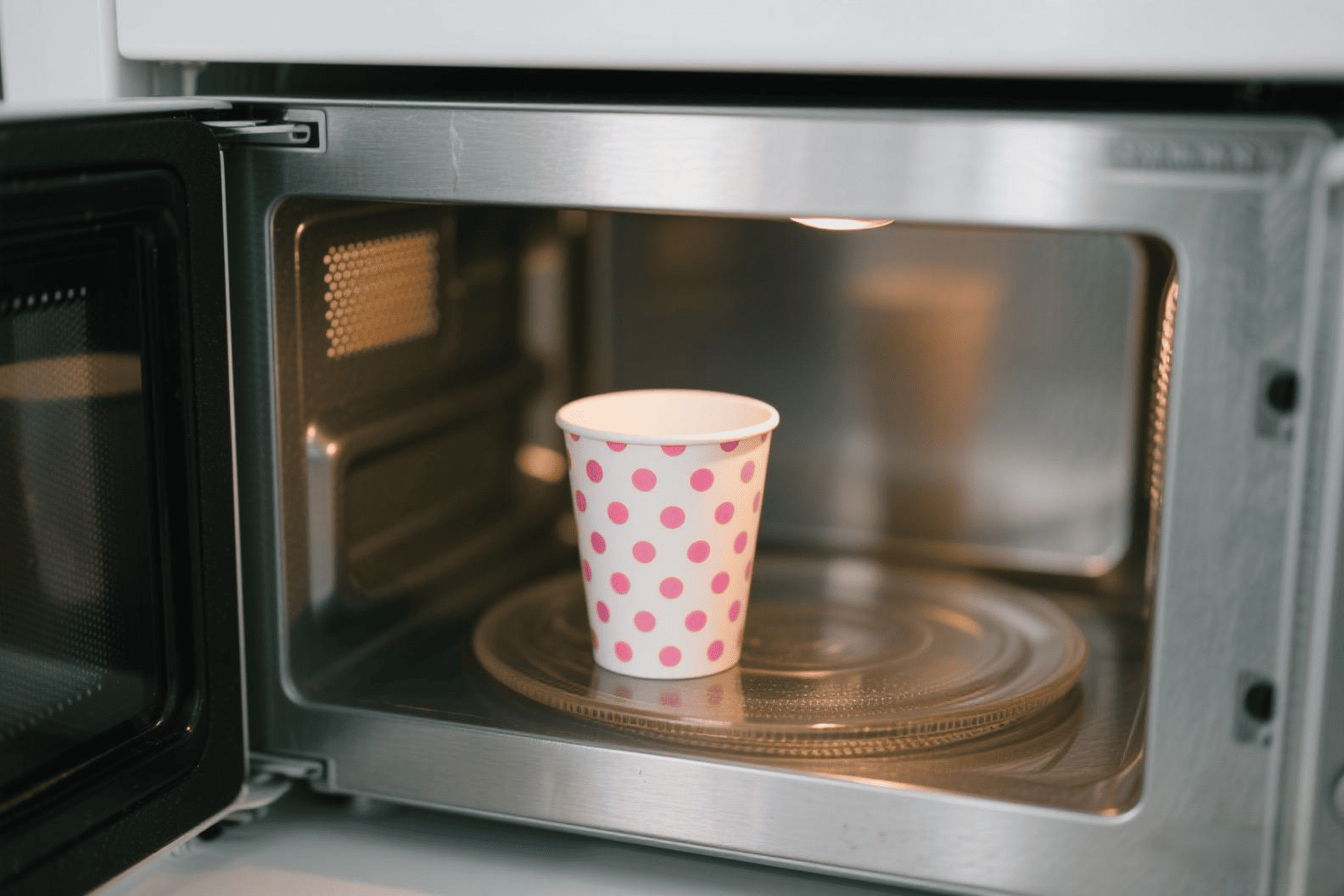
In my production work, we label compliant paper cups according to GB 4806.1‑2016 or FDA 21 CFR. For plastic, only certain PP types are safe. Cheap non‑food‑grade plastics can melt or release toxins.
Common Microwave‑Safe Cup Types
| Material | Typical Safe Use |
|---|---|
| Food‑grade paper | 1–3 min with liquid |
| Ceramic | Safe for all normal heating |
| Heatproof glass | Safe for boiling water |
| PP plastic5 | Safe for under 3 min heating |
How can I tell if my cup is microwave safe?
Visual checks and labels are the fastest way to be sure.
Look for a “Microwave Safe” label, follow manufacturer guidelines, and avoid unlabeled products for heating.
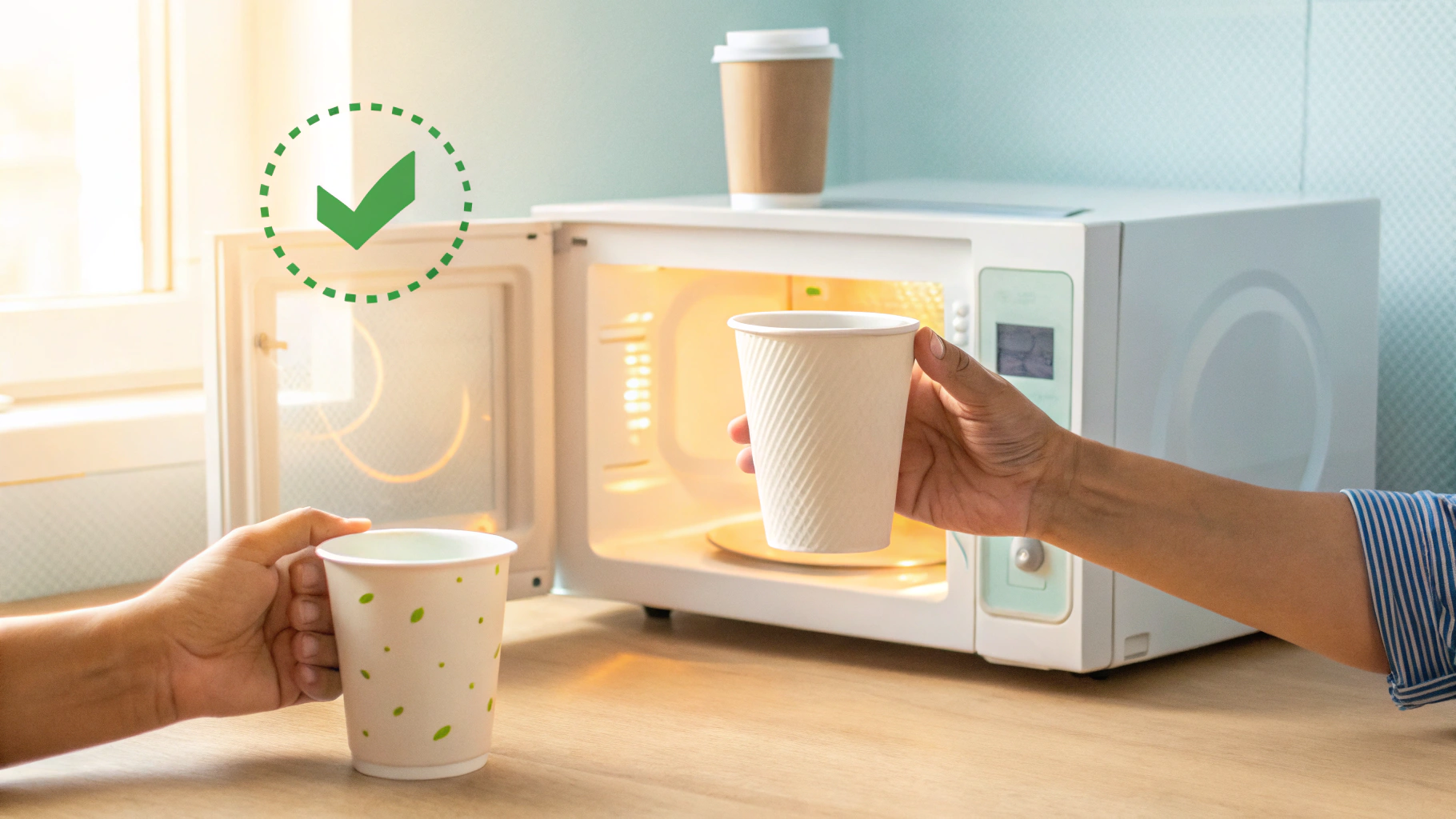
I always advise clients to include clear labeling—it builds trust and avoids misuse. A missing label usually means it hasn’t been tested, or safety isn’t guaranteed.
Quick Safety Check
- Find “Microwave Safe” icon
- Check for food‑grade compliance codes
- Review heat resistance3 specs
- Avoid damaged or peeling coatings6
Can I microwave plastic?
Plastic safety is more complicated than paper.
Some plastics like microwave‑safe PP are fine; others like PET or PS7 can warp, melt, or release harmful chemicals.
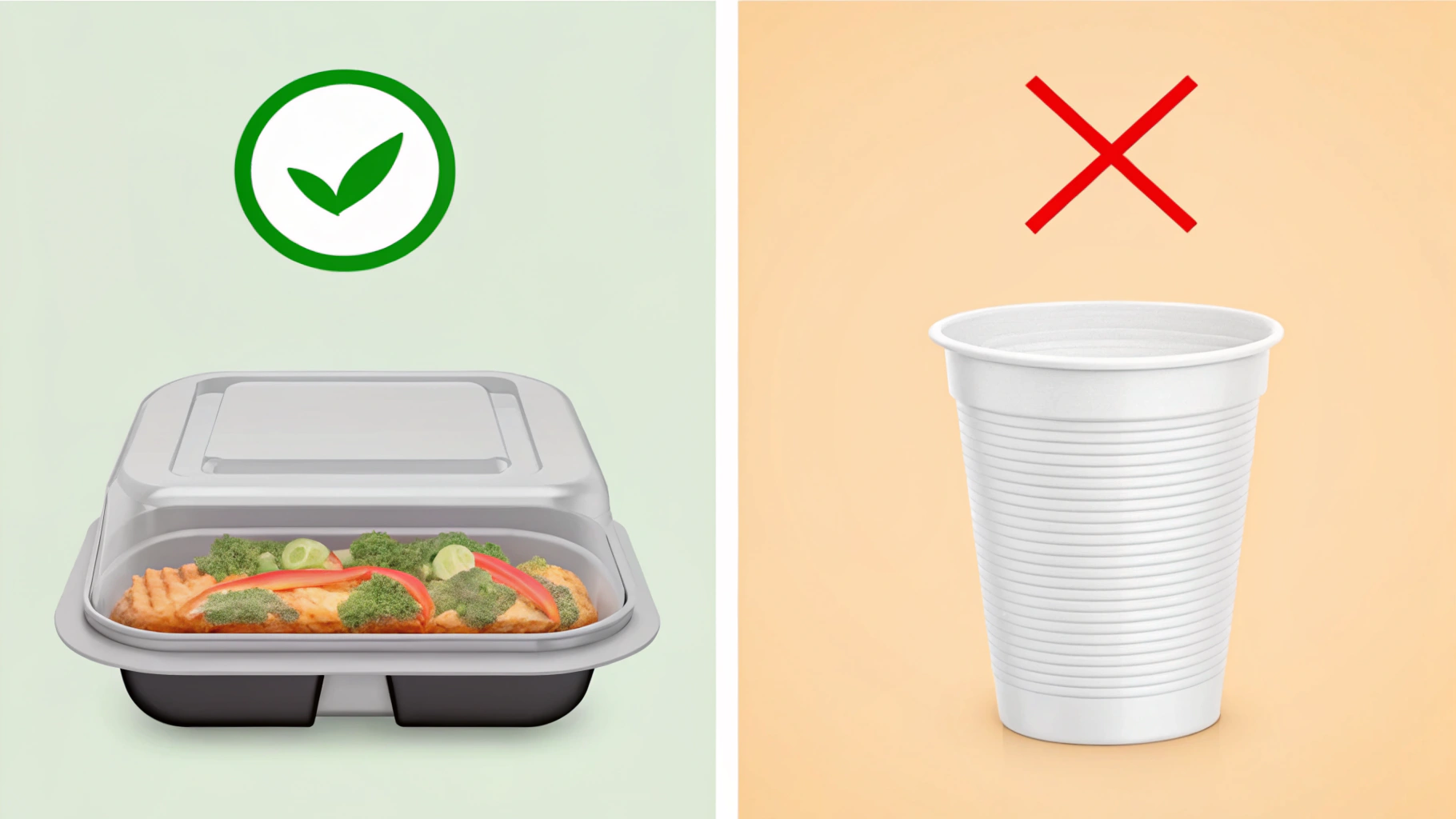
When testing PET cups, deformation started after 50–60 seconds in the microwave. Customers also reported an off‑taste. For this reason, I almost always recommend paper for reheating drinks and foods.
Plastic Microwave Safety
| Plastic Type | Safe to Microwave? | Notes |
|---|---|---|
| PP | Yes | Short‑term heating only |
| PET | No | Warps and can release chemicals |
| PS | No | Can melt, unsafe for hot liquids |
Conclusion
Food‑grade coated paper cups are safe for short‑term microwave heating when used with liquid inside. They avoid plastic’s taste issues and offer better eco and health perception, but always check labeling and avoid empty heating for safety.
1.Understanding food-grade coatings helps ensure safety when microwaving paper cups. ↩
2.Find out the safety of uncoated kraft paper when heated in the microwave. ↩
3.Discover how heat resistance affects the safety of paper cups in the microwave. ↩
4.Understanding migration limits is crucial for ensuring that no harmful substances leach into food. ↩
5.Learn about PP plastic's safety in microwaves and its applications. ↩
6.Explore the risks associated with using cups that have damaged coatings. ↩
7.Understand the dangers of microwaving certain plastics to avoid health risks. ↩
